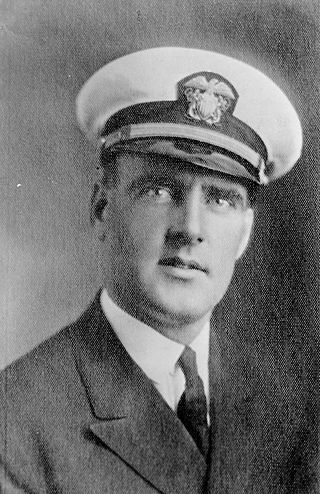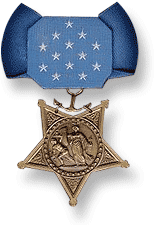
The first USS Pensacola was a screw steamer that served in the United States Navy during the U.S. Civil War.

USS Saratoga, a sloop-of-war, was the third ship of the United States Navy to be named for the Battle of Saratoga of the American Revolutionary War. Her keel was laid down in the summer of 1841 by the Portsmouth Navy Yard. She was launched on 26 July 1842 and commissioned on 4 January 1843 with Commander Josiah Tattnall III in command.

The first USS Iroquois was a Mohican-class sloop of war in the United States Navy during the American Civil War.

Edwin Joseph Hill, was a United States Navy sailor who was stationed on the USS Nevada (BB-36) during the attack on Pearl Harbor, Hawaii, on December 7, 1941. He posthumously received the Medal of Honor for his actions during the battle.

Robert Augustus Sweeney was a sailor in the United States Navy and is one of only nineteen servicemen, and the only African American, to receive the Medal of Honor twice, both for peace-time actions.
Albert Weisbogel was a 19th-century United States Navy sailor. He was twice awarded America's highest military decoration, the Medal of Honor, for peacetime actions. He is one of only 19 people to be awarded two Medals of Honor, and one of only 14 to be awarded the Medal twice for two separate actions.
William Bradford Stacy was a United States Navy sailor and a recipient of the United States military's highest decoration, the Medal of Honor.
Frank Du Moulin was a United States Navy sailor and a recipient of the United States military's highest decoration, the Medal of Honor.
Paul Tobin was a United States Navy sailor and a recipient of the United States military's highest decoration, the Medal of Honor.

George Holt was a United States Navy sailor and a recipient of the United States military's highest decoration, the Medal of Honor.

USS Fortune was a steam-powered tugboat that served in the United States Navy intermittently from 1871 to 1922. Built in 1865, she was the first ship so named. Fortune was classified as YT-11 on 17 July 1920. Through her lengthy career, she served as a harbor tug, fireboat, cargo transport, training ship, and submarine tender, among other duties.
Michael Deneef (1851–1891) was a United States Navy sailor and a recipient of the United States military's highest decoration, the Medal of Honor.

John Handran (1852-1885) was a United States Navy sailor and a recipient of the United States military's highest decoration, the Medal of Honor.
Edward Maddin was a United States Navy sailor and a recipient of the United States military's highest decoration, the Medal of Honor.
Richard Ryan was a United States Navy sailor and a recipient of the United States military's highest decoration, the Medal of Honor.

David M. Buchanan was a United States Navy sailor and a recipient of the United States military's highest decoration, the Medal of Honor.
George Low (1847–1912) was a United States Navy sailor and a recipient of the United States military's highest decoration, the Medal of Honor. His birth name was George Low Evatt.
William Sadler was a United States Navy sailor and a recipient of the United States military's highest decoration, the Medal of Honor.
Adam Weissel was a United States Navy sailor and a recipient of the United States military's highest decoration, the Medal of Honor.
William James Creelman was a United States Navy sailor and a recipient of the United States military's highest decoration, the Medal of Honor. He was awarded the medal for jumping overboard during an 1897 winter storm in an unsuccessful attempt to rescue a shipmate from drowning. Creelman went on to become a commissioned officer before leaving the Navy.








